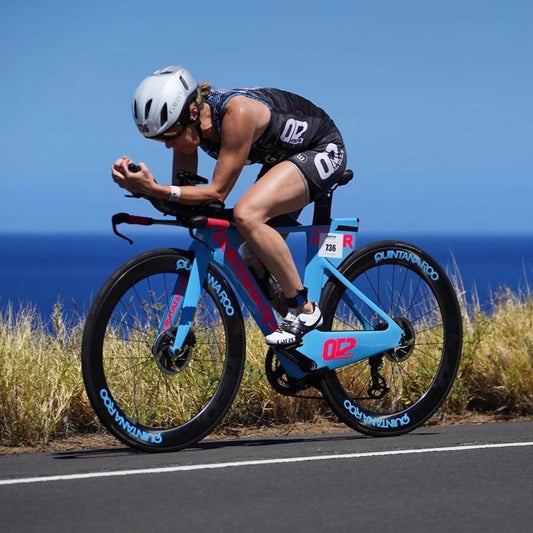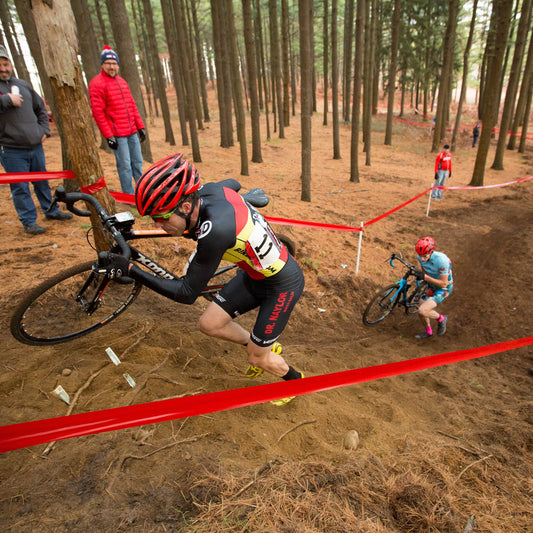System Failure
These thoughts present my opinion on the process of system breakdown particularly during the run in Ironman. Most people that have not met critical volume for their event will experience system failure at some point during their race. In Ironman, this usually means walking during the marathon. When you look at what has occurred to an athlete that is walking, you will see that it is usually due to a peripheral system failure; meaning legs, versus a core system such as respiratory/cardiovascular. I'll even include the head (mind) in the peripheral category. When you see people walking during the marathon, typically their peripheral system has failed so badly that they cannot stimulate their core effectively (i.e, although they cannot move any faster their heart rate remains much below their typical lowest training zone). For most athletes I believe this lack of peripheral system toughness or durability is due to lack of training volume. That is, they are not meeting critical volume for their event. In races such as the 5k critical volume is extremely low and therefore is met by most participants. The limiter in such a race is typically respiratory/cardiovascular (core system) and is therefore best trained with higher intensity training or repeats that stimulate the core system.
Due to these realizations it becomes intuitively clear that IM run training should be focused on training the peripheral system (leg durability and mental toughness) first. Working the core systems (respiratory/cardiovascular) should be of secondary importance since for most age groupers the major limiter is peripheral (i.e. they don't have the ability to use their core systems to their potential).
How does one train their peripheral system? Here are some major distinctions to train the peripheral system in order of importance:
- Do your best to meet critical volume for your event during the "final 7".
- Do your long run the day after your long bike. This trains the peripheral system because your legs are already somewhat shelled from the previous day's long bike ride. Don't underestimate the value of this concept to increase leg durability and mental toughness (both peripheral systems). The key to making these two-day training blocks beneficial is a solid recovery on the third day. The argument to train these long sessions on non-consecutive days holds water for athletes where peripheral system failure is not an issue, and running on fresher legs will result in better core system stimulation (faster pace). This is typically only the case for shorter distance racers where critical volume is easily met and core systems are the limiter.
- Big week run training and run frequency does wonders to improve leg durability.
- As I've said many times and have practiced in the past, long day hikes improve mental toughness and overall durability in ways swimming, biking and running can't.
- The tradition of running a focused period of hills in your training is also very beneficial. This also includes running hilly terrain during long runs.
For folks that cannot meet critical volume for their event, they should make the realization that system failure will occur (if not walking, then sudden reduction of pace). Understanding that this will occur should result in a modification of race strategy. In these cases, attempting to run the entire distance at one's speed potential will almost certainly result in system failure and its therefore best that the athlete take walking breaks before needed. The idea is that you will loose less time if you take walking breaks before you need them versus when you will. These walking breaks are not total rest, but focused periods of fast walking to refresh the running legs. Below is a rough equation that I like to use based on critical volume to determine the length of the walk breaks for my athletes:
Walk Break Length = -120 X (CVR) + 120 (in seconds)
Where, CVR (Critical Volume Ratio) = The average of your two highest run volume training weeks during pervious six weeks before the race divided by critical volume for the event
Reduce this calculated value by 5 second for each year of experience at the particular goal race distance up to a total reduction of 25 seconds.
These walk breaks should be taken every 15 minutes during the run segment of your race from the beginning of the segment for as long as calculated above. It's worth noting again that these are not rest breaks, but focused fast walking with high cadence to refresh the mind and running legs.
To determine your goal running pace between walk break segments, use the calculator to estimate your running pace. This pace will include walk breaks and therefore have to be corrected (increased) to determine your goal pace between breaks to achieve the calculated time.
These concepts form the basis of the triathlon calculator and run calculator. In those instances, the point at which system failure is assumed to occur is based on critical volume for the event. However, when an athlete has significant race experience, peripheral system toughness is typically higher than what their critical volume may suggest. This is the primary reason for the addition of race experience to these calculators.
-Jesse





